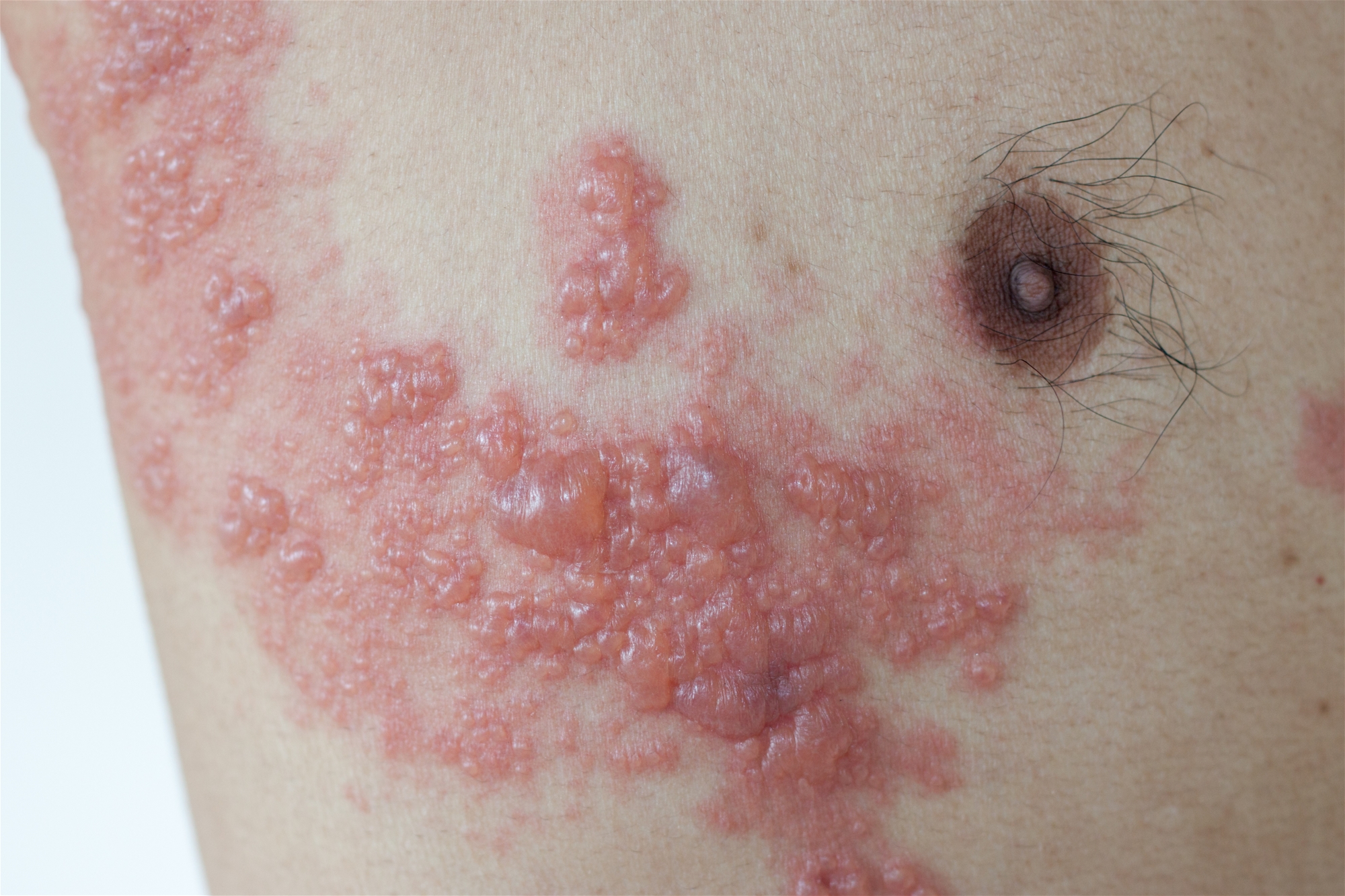Herpes zoster, also known as shingles, is a viral disease characterized by a painful skin rash with blisters in a localized area when the patient had "chickenpox" before whose virus was latent in the body before a re-attack occurs in adults or the elderly.
The disease mainly affects the ganglion and the skin it innervates. Usually the skin lesions can be cured within one or two weeks as long as they are taken good care of without bacterial infection and other complications.
Occasionally, the inflammation reaction of patients is more intense, resulting in skin ulceration and necrosis, and the healing time is longer. As for the pain, it's a type of neuralgia, because the ganglion is involved, and it can sometimes drag on for months. Cancer patients, patients with abnormally low immune function or lesions that affect the eyes and reproductive organs should be treated with antiviral drugs.

Precautions
- Care must be taken for skin lesions. Do not apply over-the-counter medicines without permission to avoid local infection and necrosis and delay recovery.
- Try to avoid breaking blisters to prevent bacteria from invading the wound.
- Protect the affected area and reduce friction.
- Treatment should be given under the guidance of the doctor, with topical application of appropriate drugs, until blisters dry, scab, and fall off.
- The physician shall give medicine for internal use, depending on the degree of pain and condition of the affected area.
- After the epidermal lesion has healed, the pain may persist. Consult a dermatologist or pain doctor for assistance and control.
- Chicken pox may occur in family members or recently contacted relatives and friends who have not developed chicken pox before, so herpes zoster patients should avoid physical contact with those who have not suffered from the illness.
- There are no special restrictions on diet, but alcohol, spicy food and other stimulants should be avoided.

